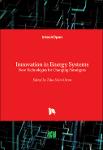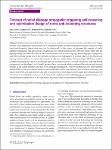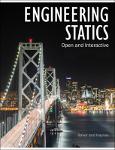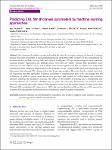Search
Author
- Amir, Ebrahimi (2)
- Aydin, Azizi (2)
- George, Haller (2)
- James, M. Fiore (2)
- next >
Subject
- robotics (9)
- Engineering (8)
- engineering (8)
- công nghệ (3)
- next >
Date issued
- 2020 - 2023 (215)
- 2010 - 2019 (28)
- 2001 - 2009 (6)
Search Results
Overview: This book is an outline of selected topics in introductory algebra-trig-based physics. The worked examples are level-one problems that are straightforward and accessible to novice students. The content of this book is a combination of borrowed materials (primarily from Openstax textbooks) and original writing. This book is and will remain a work in progress. |
Osteoarthritis is associated with the significantly increased friction of the joint, which results in progressive and irreversible damage to the articular cartilage. A synergistic therapy integrating lubrication enhancement and drug delivery is recently proposed for the treatment of early-stage osteoarthritis. In the present study, bioinspired by the self-adhesion performance of mussels and super-lubrication property of articular cartilages, a biomimetic self-adhesive dopamine methacrylamide—poly(2-methacryloyloxyethyl phosphorylcholine) (DMA—MPC) copolymer was designed and synthesized via free radical polymerization. |
This book aims to cover new technologies, methods, and approaches developed to meet: Traditional power systems are analog, unilateral, and mostly passive. New age power networks are smart, digital, incorporate communication for better operation, and involve collaborative decision-making. |
Self-loosening of bolted joints can occur in a vibration environment, and it may induce bolt fatigue fracture with catastrophic consequences. It is essential to clarify the self-loosening mechanism, based on which novel anti-loosening thread structures can be developed. In this paper, we propose the concept of radial slippage propagation and provide new insights into the self-loosening process. The new theory states that the slippage along the radial direction of the thread surface induces more slippage areas (slippage propagation), and self-loosening occurs due to the dynamic evolution and propagation of contact states on the thread and bearing surfaces with an increase in the number of vibration cycles. |
Introduction to engineering mechanics: statics, for those who love to learn. Concepts include: particles and rigid body equilibrium equations, distributed loads, shear and moment diagrams, trusses, method of joints and sections, & inertia. |
This book’s content should prepare you for subsequent classes covering Engineering Mechanics: Dynamics and Mechanics of Materials. At its core, Engineering Statics provides the tools to solve static equilibrium problems for rigid bodies. The additional topics of resolving internal loads in rigid bodies and computing area moments of inertia are also included as stepping stones for later courses. We have endeavored to write in an approachable style and provide many questions, examples, and interactives for you to engage with and learn from. |
Non-dimensional similarity groups and analytically solvable proximity equations can be used to estimate integral fluid film parameters of elastohydrodynamically lubricated (EHL) contacts. In this contribution, we demonstrate that machine learning (ML) and artificial intelligence (AI) approaches (support vector machines, Gaussian process regressions, and artificial neural networks) can predict relevant film parameters more efficiently and with higher accuracy and flexibility compared to sophisticated EHL simulations and analytically solvable proximity equations, respectively. For this purpose, we use data from EHL simulations based upon the full-system finite element (FE) solution and a Latin hypercube sampling. |
The book focuses on the fundamental bases of software and hardware. Specific products and tools are mentioned only if they have outstanding characteristics. Again, this is in-line with the ARTIST guidelines: “It seems that fundamental bases are really difficult to acquire during continuous training if they haven’t been initially learned, and we must focus on them” [85]. As a consequence, this book goes beyond teaching embedded system design by programming micro-controllers. The book presents the fundamentals of embedded systems design, which are needed for the design of CPS and IoT systems. With this approach, we would like to make sure that the material taught would not be outdated too soon. |
Synovial fluid is made up of various biomacromolecules, including hyaluronic acid, aggrecans, lubricins, and phosphatidylcholine lipid, which are assembled onto the surface of articular cartilage in a gel state. Among them, brush-like biomacromolecules or assemblies have a vital effect on human joint lubrication. Inspired by this, the combination of brush-like molecular structures and gel-like assembly may be an efficient approach for the synthesis of biomimetic lubricating matters. Learning from the lubrication system of human joints, poly(2-methacryloyloxyethyl phosphorylcholine) (PMPC) brushes grafted poly(N-isopropylacrylamide-co-acrylic acid) (poly(NIPAAm-co-AA)) microgels, abbreviated as MBs-g-MGs, were synthesized as one kind of biomimetic lubricating additives. |
The text builds outward from the basic concepts and definitions of the underlying physics, guiding the reader through thermodynamic properties and introducing the subject of gasses. From there, the First and Second Laws of Thermodynamics are explored in some depth.
Each Chapter and Section begins with some introductory text, followed by Examples. It is noted that the Solutions to the Examples seem to be written for students with some familiarity with Engineering Thermodynamics; this appears to be inconsistent with the book’s title, which is Introduction to Engineering Thermodynamics. It is recommended that the Sections be reviewed and edited to provide a sequence of problems of increasing complexity, with all steps delineated, for the training of the students in this field. |










